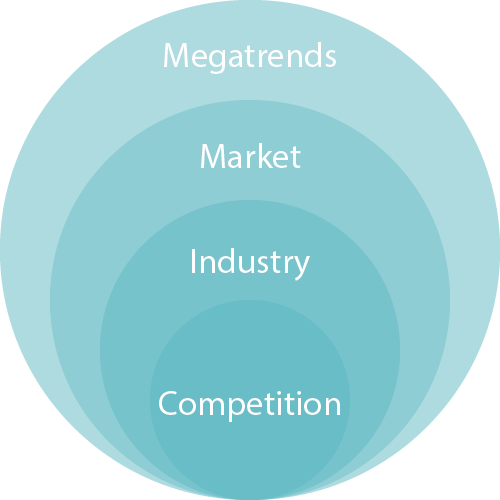Don’t let your strategic planning be another year of wash, rinse, repeat. Do something different. Start by building a better strategic plan. From now through the end of the year we’re dedicating each installment of our newsletter to serving up our best insight, experiences, and practical tips for helping you build a better strategic plan.
So, let’s start with the hard, cold reality that your plan probably sucks. Why? Chances are your past planning efforts have missed one, very important ingredient. They lacked market data. But isn’t everything data? No, it’s not. Data are facts, published by someone other than yourself and recognized as reputable sources.
Why is data important?
Without data it’s easy to fudge your own reality. You’ll bark up the wrong tree. You’ll see things that aren’t there. Data keeps your planning process grounded in reality. It’s like having concrete for a foundation. People don’t see it, but it helps hold everything together.
How is the data used to support the planning process? Think of the collection of external data as a series of concentric circles. Here’s the breakdown of the 4 different data circles that can give vital information you need for your planning process.
Get the Free Guide and Canvas to Build a Solid Growth Strategy

- Megatrends – The outside circle is filled with megatrends having big impact on most organizations, like aging baby boomers, growth of millennials, and so on.
- Market – The next smaller circle is market. This covers your geographic market and your target markets. Data sources may include economic development organizations, or Census Bureau statistics.
- Industry – Coming in a little bit closer is industry-specific. Find the top three sources of reliable data relevant to your industry. Look for quantitative data supporting industry trends, market sizing, shifts in customer demographics, or even movement with environmental, political, or economic conditions impacting your ability to fulfill your mission and achieve your vision.
- Competition – Before and during your planning process, you need to take a look at what your competitors are doing. Take a look at what they’re doing well and what you’re doing well. This is important to gain a holistic view of your external factors.
With data in place, use it to help define your organization’s current state, especially when conducting a SWOT analysis. Remember, SWOT simply stands for Strengths, Weaknesses, Opportunities and Threats. Market data is especially helpful in identifying areas of growth opportunities or identifying potential threats, which need to be continuously monitored.
This is just a primer. Learn more about the different types of data and how they’re used by watching a recently produced whiteboard video session. Watch it here.
Check our new “How to Perform a SWOT Analysis” video below.












